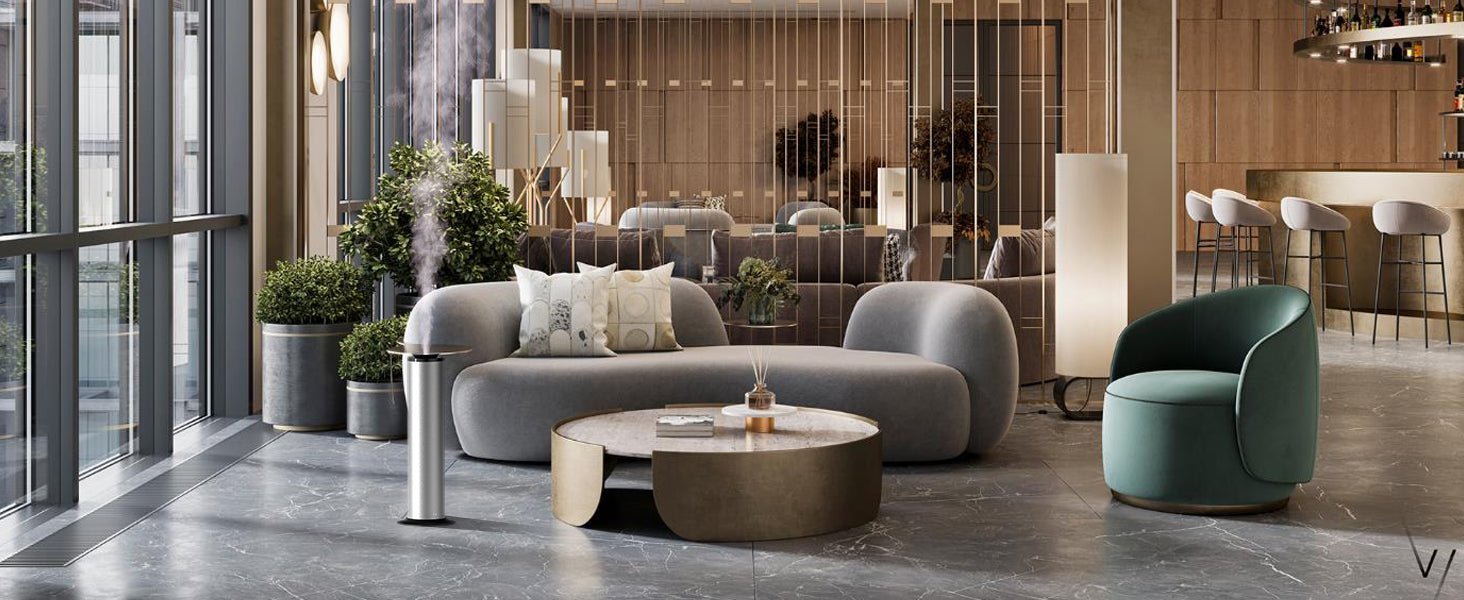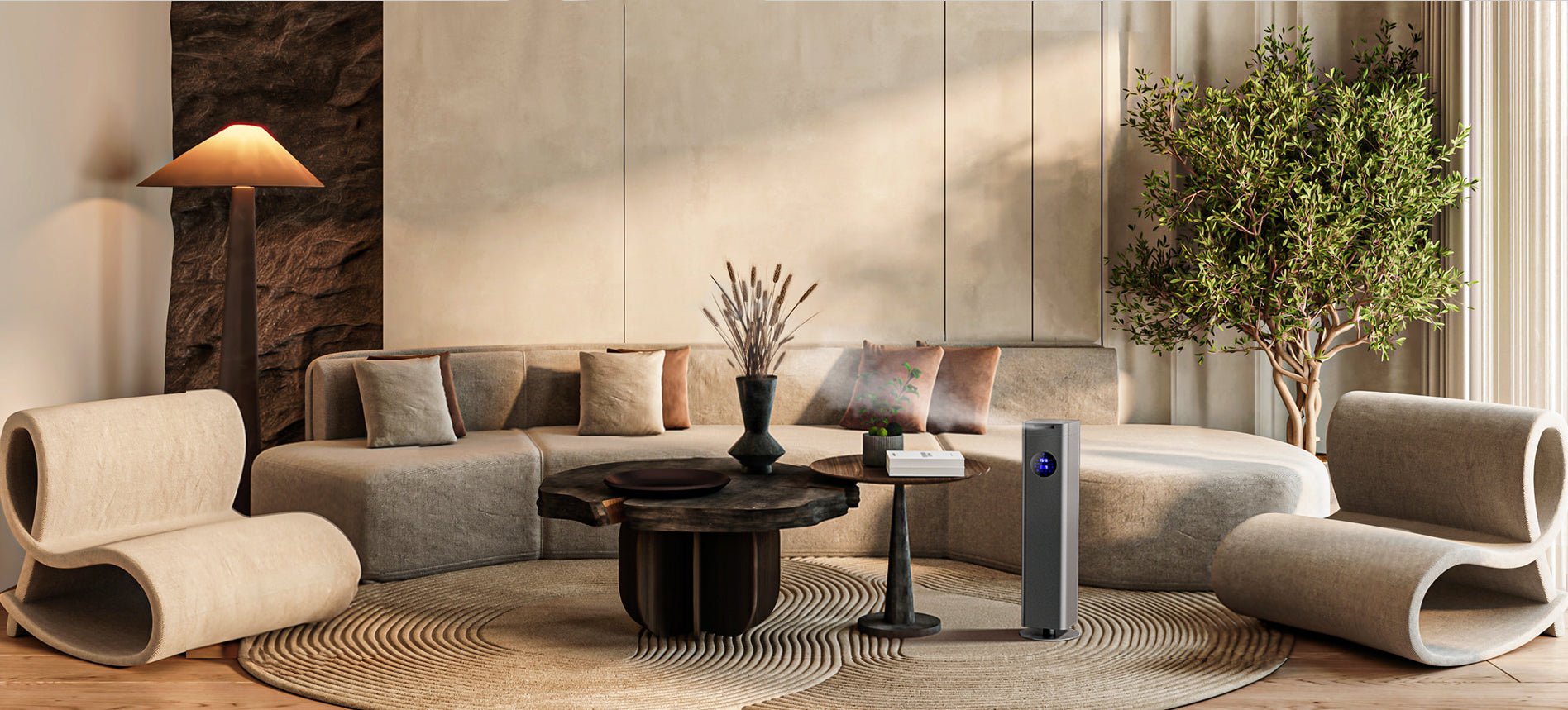
The Home Wellness Guide: 4 Science-Backed Steps to Design Your Sensory Sanctuary
Why You Need a Healing Space?
If you battle through gridlocked commutes, endless meetings, and the relentless "perfect life" curated by social media—only to return home feeling exhausted and isolated—you’re not alone.
Data from the American Psychological Association (APA) reveals that 72% of adults live under chronic stress, while loneliness among Millennials and Gen Z has reached historic highs.
Though Instagram and TikTok overflow with #AestheticRoom inspiration, those picture-perfect setups often lack what truly matters: neuroscience-backed comfort.
A healing space isn’t about replicating influencer filters—it’s about synergizing sight, sound, smell, and touch to transform your home into a “nervous system reset zone.” Today, we’ll decode the science of restorative spaces and show you how to create one affordably.
I. The Four Core Elements of a Healing Space
Why They’re Non-Negotiable:
-
Sight: Your Brain’s “First Impression” Filter
-
90% of sensory input is visual. Clutter spikes cortisol (stress hormone) by 15% (Journal of Environmental Psychology).
-
Soft neutrals (beige, muted blue) activate relaxation; high-contrast colors (bright red) trigger stress.
-
Sound: Remote Control for Brain Waves
-
Urban noise increases amygdala (fear center) activity by 37% (Neuroscience).
-
432Hz music induces alpha brain waves (8-14Hz), lowering heart rate in 5 minutes (Harvard Medical School).
-
Smell: The Subconscious Mood Switch
-
Smell impacts emotions 100x faster than sight (NIH). Cheap fragrances emit headache-triggering VOCs.
-
Solution: A waterless essential oil diffuser (like models with two-fluid atomization) preserves active compounds in essential oils and eliminates mold risk.
-
Touch: Skin-Deep Safety Codes
-
Barefoot time on rugs cuts anxiety by 28% via oxytocin (Annals of Behavioral Medicine).
-
Cold metals/rough fabrics trigger subconscious “danger” signals.
II. Action Plan: From Theory to Reality
-
Visual Design: Less Clutter, More Calm
Steps:
-
60-30-10 Rule: 60% neutrals (warm white) + 30% earth tones (terracotta) + 10% accents (matte gold).
-
Lighting: Philips Hue bulbs mimic sunrise; linen curtains soften glare.
-
Declutter: IKEA storage boxes + abstract nature art (forests/oceans). Pro Tip: Avoid “dopamine decor” – oversaturated colors cause fatigue.
-
Soundscaping: 3-Layer Audio Therapy
Steps:
-
Base: LectroFan white noise machine ($50) to mute traffic.
-
Core: Spotify’s 432Hz Deep Focus for productivity; Ocean Frequencies for yoga.
-
Personal Touch: Add ticking clocks or page-turning sounds. Hack: Place speakers near your aromatherapy diffuser – vibrations boost oil diffusion.
-
Smell: Why a Waterless Diffuser Wins
Avoid These “Silent Killers”:
-
🚫 Humidifier diffusers: Grow mold in 72hrs (UCLA).
-
🚫 Candles: Emit benzene + 5x more PM2.5 than outdoor air.
-
🚫 Plug-ins: Heat destroys active compounds in essential oils.
Your Fix: ✅ Two-Fluid Atomization Diffuser:
-
5-micron mist: Compressed air + oils = even, whole-room coverage.
-
Zero water/heating: Preserves 100% of essential oil’s therapeutic compounds (e.g., lavender’s linalyl acetate).
-
Smart modes: Sleep (low frequency), Party (high diffusion).
Top Blends:
| Scenario | Essential Oils | Benefit |
| Morning Focus | grapefruit/rosemary | Boosts dopamine, +40% focus |
| Night Calm | lavender /vetiver | Triggers GABA for deep sleep |
| Anxiety Relief | bergamot/cedarwood | Lowers cortisol by 45% |
-
Touch: Neuroscience of Materials
Steps:
-
High-Touch Zones:
-
Sofa: Velvet or organic cotton (West Elm).
-
Floor: Faux shearling rug + memory foam cushions.
-
-
Micro-Interactions:
-
Playdough on desks; wood/ceramic cabinet pulls. Game Changer: 15-lb weighted blanket cuts sleep time by 33%.
-
III. Summary: Your Healing Blueprint
Formula:
(Visual Calm × Natural Scents) + (Sound Therapy ÷ Clutter) = Emotional Resilience
Start Here:
-
Audit one corner using the 4-element checklist.
-
Begin with smell – a two-fluid atomization diffuser delivers instant, mold-free calm.
-
Remember: Your space serves you, not Instagram.


Leave a comment
This site is protected by hCaptcha and the hCaptcha Privacy Policy and Terms of Service apply.